The 2020 Changing Places specifications and what they mean for your community
Earlier this year the Changing Places Specifications for 2020 were released, in this post, we’ll break them down in easy to digest, bite-sized pieces.
Note: This blog post was not written in partnership with Changing Places and has instead been created to educate our audience.
What is a changing places facility?
Changing Places are bathroom and changing facilities designed to accommodate those with disabilities or high support needs. They are larger than standard accessible toilets and are fitted with changing tables and hoists (VHHSBA).
Changing place facilities are only accessible with a Master Locksmiths Access Key (MLAK) ensuring they are reserved for those who need them most.
These facilities are regulated by local governing bodies at a state level. In Victoria, it’s the Victorian Health and Human Services Building Authority (VHHSBA).
The numbers

The timeline

Figure 6: Changing Places Design Specifications 2020, pg. 26.
Why do we need changing places specifications?
Changing Places specifications are in place to ensure that designated facilities are adequately equipped and function to a consistently high standard.
Standardised layouts allow for adequate circulation throughout the building. The specified layout options also ensure hoist coverage is maintained for each section of the facility.
The updated 2020 specifications have been effective since 1 April 2020 and are in place until updated specifications are released. New information is typically released every three years.
Covered in the specifications
- Branding guidelines
- Approved configurations
- Fit-out requirements
- Case studies
- Certification processes and requirements
What are some of the basic features of a Changing Places facility?
- Height-adjustable adult-sized change table
- Ceiling track hoist system
- Centrally located accessible toilet
- Circulation spaces
- Automatic door with a clear opening of 950 mm at a minimum (1100 mm for beach and lake locations)
- Privacy screen
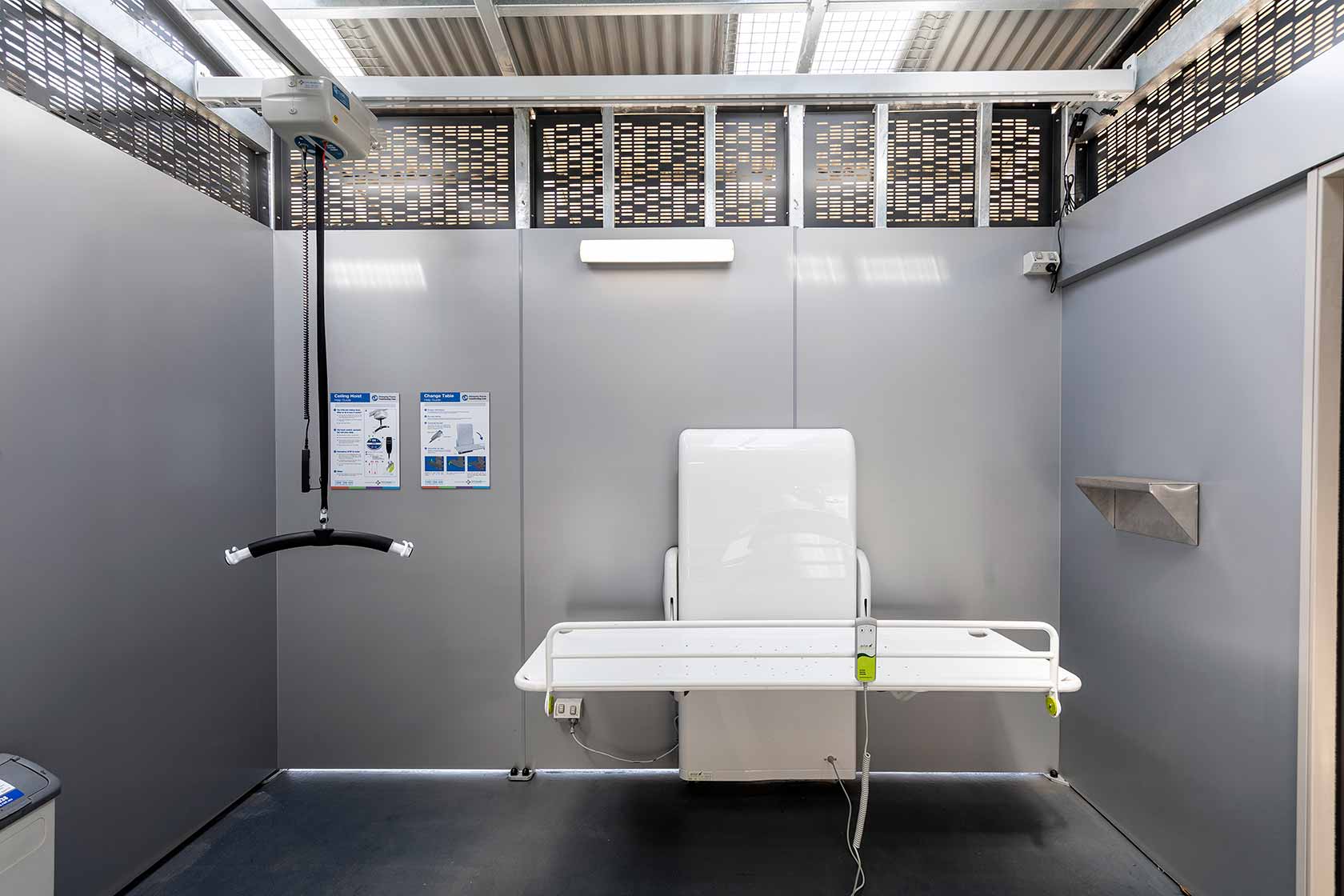
Changing Places certification
What is a changing places certification?
For your facility to be recognised by Changing Places as compliant, it must go through a certification process. This ensures all aspects adhere to stringent specifications set out to benefit those who use them.
Once your facility is certified, it will appear on the official Changing Places map, where users can locate the facility.
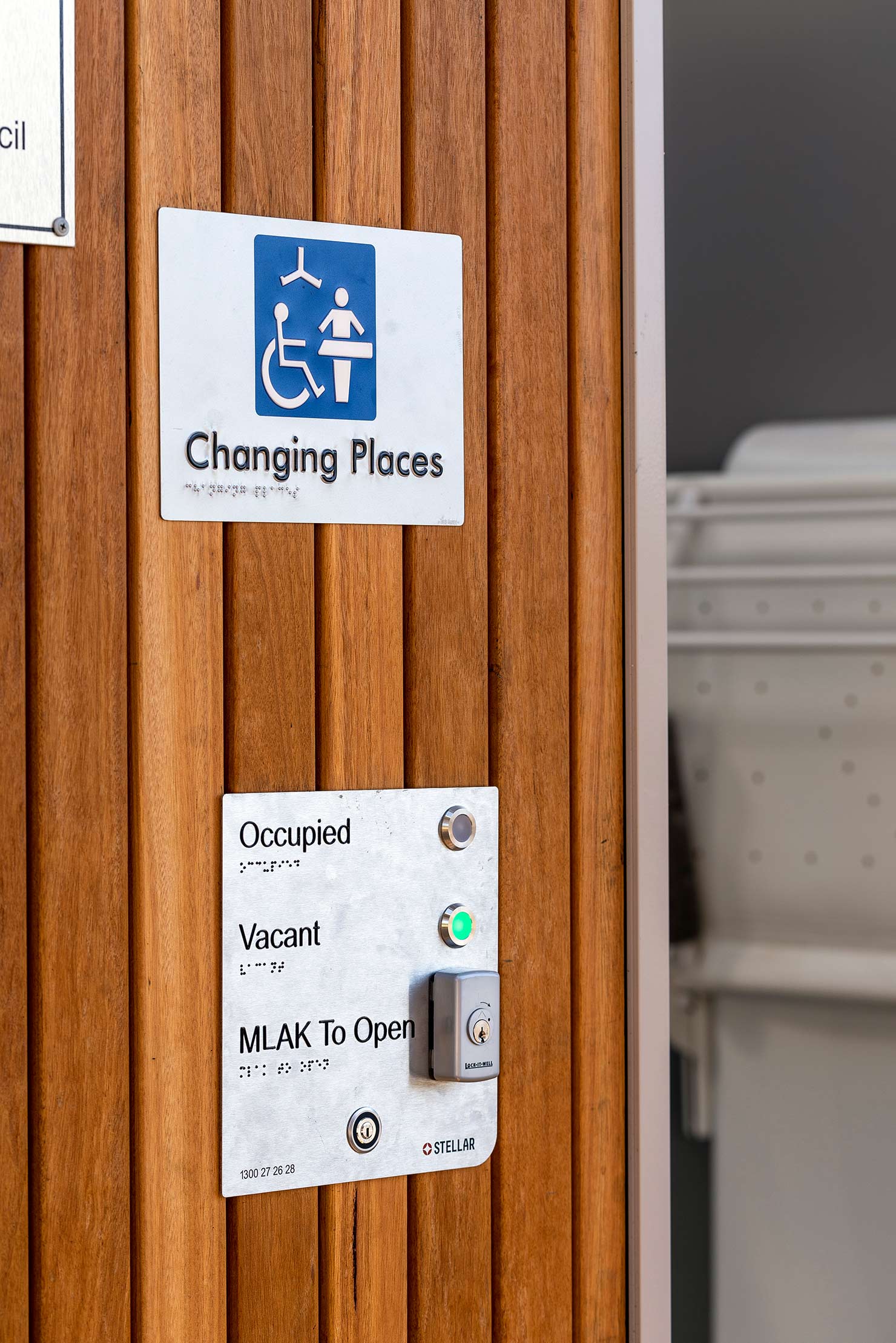
Why should you consider being certified?
Users can find you easily
Having your facility certified ensures it will appear on the digital map, which is usually the first point of reference for users. This will encourage users to visit your community, knowing they can utilise your parks and public spaces without worry.
Guidance
A Changing Places Assessor will provide guidance and recommendations, so your facility is compliant. This process will ensure that no elements of the facility have been overlooked.
Can you obtain certification once it’s open?
Yes, but it’s difficult
It’s in a council’s best interest to be certified, this process needs to be started at the beginning of the planning process. Certification becomes difficult to obtain after the fact as a variety of requirements may have not been considered during the project.
Starting the certification process during the planning stages of your facility ensures that nothing is overlooked, and the facility is built with the user in mind.
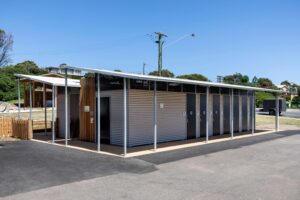
How long does the certification last for?
The Changing Places certification will last for the life of the building. When new specifications are released your certified facility won’t need to be updated or altered in any way. The only exemption is when the facility is located within a building undergoing renovations or significant upgrades. In this case, building codes may require a facility upgrade in order to meet compliance.
How does the certification process work?
There are a few steps in the process, broadly it will follow this order:
- Engaging an Access Consultant at start of the project (there is a fee associated with this)
- The Access Consultant will review your plans and specifications to provide recommendations
- Once plans are submitted you will receive an Access Report which will include:
- Building codes
- Specific to the plans you submitted
- List of modifications required
- Rating for each checklist item
- Upon completion, the Access Consultant will conduct a site inspection in accordance with guidelines
National Construction Code:
Australia is the first country in the world to regulate adult changing facilities in it’s building code.

The National Construction Code (NCC) specified that as of 1 May 2019, a new type of toilet known as the ‘Accessible Adult Change Facilities’ (based on the Changing Places design) must be included in certain classes of public spaces.
| Location | Capacity Requirement | Alternative Requirement |
| Class 6 buildings: Shopping centres | 3,500 people or more | |
| Class 9b sports venues
| 35,000 people or more | Contains a swimming pool that has a perimeter of 70 m or more |
| Museum and art gallery (or similar) buildings
| 1,500 or more people | |
| Theatre and entertainment venues
| 1,500 or more people | |
| Domestic and international passenger airports. | 1,500 or more people |
Specified Designs
The four design options as specified by the Changing Places Technical Advisory Team:
Design 1A: Without shower rectangular

Figure 1: Changing Places Design Specifications 2020
Design 1B: Without shower square
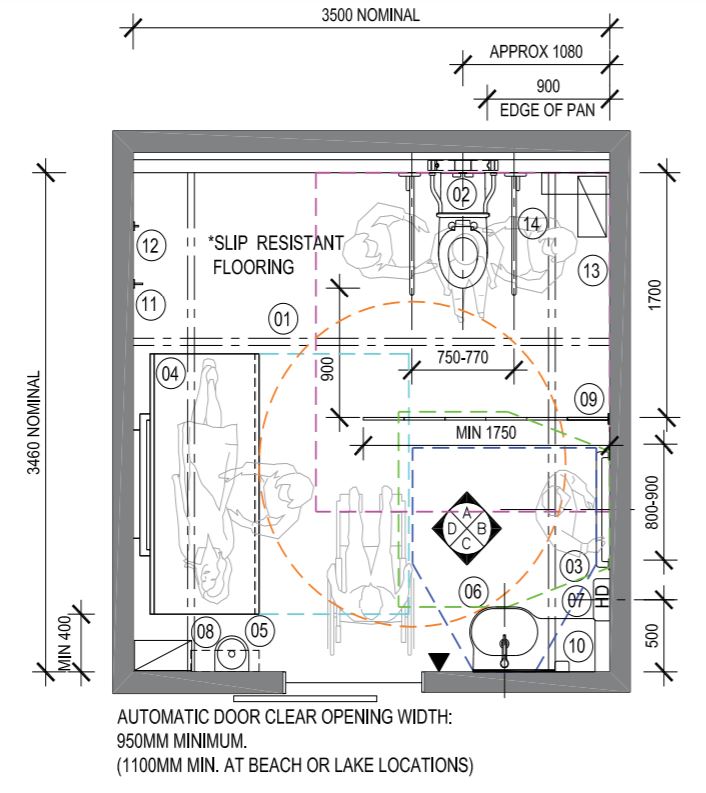
Figure 2: Changing Places Design Specifications 2020
Design 1C: Without shower alternative door location

Figure 3: Changing Places Design Specifications 2020
Design 2: With shower rectangular
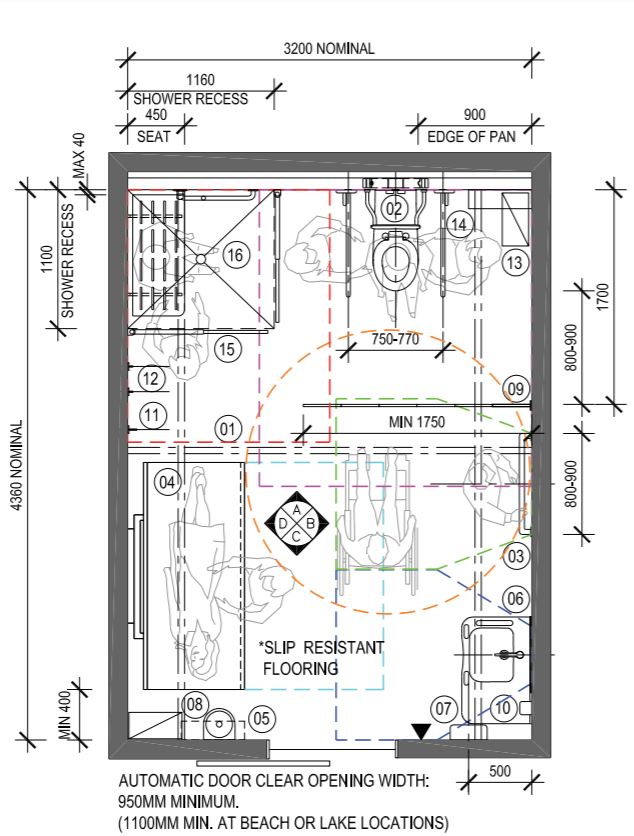
Figure 4: Changing Places Design Specifications 2020
Can the four layouts be modified in any way?
A changing places assessor can approve modifications or an alternative layout based on the needs of the community and location requirements and limitations. An alternative layout may need to be assessed as a Performance Solution under the National Construction Code, if applicable.
The Technical Advisory team may also be required to approve the modifications to ensure it can be listed as an approved changing places facility.
What are the door requirements?
The door must be automated with a clearing of at least 950 mm, at beach locations the minimum is increased to 1100 mm to accommodate beach wheelchairs.
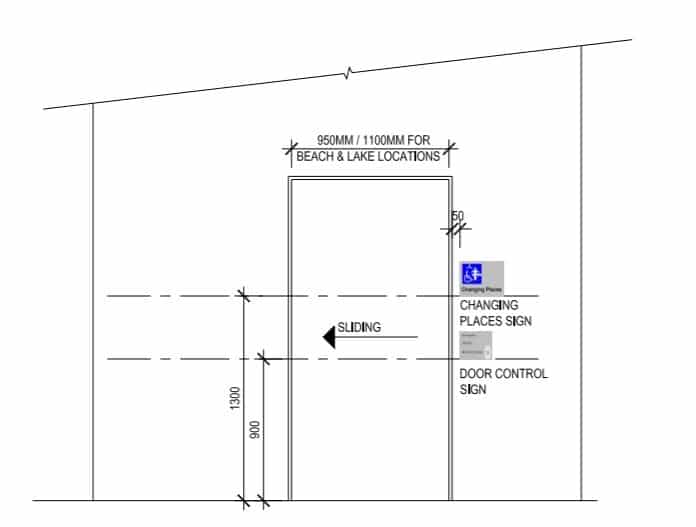
Figure 5: Changing Places Design Specifications 2020, pg. 26.
The door must be calibrated to have a dwell time of 9 seconds, allowing enough time for people to safely enter prior to the door closing. The door must also be fitted with a fail-safe opening mechanism that opens the door if an object is detected in its path.
New Changes:
Site inspection
A site inspection is required prior to the opening of the facility, this is the final step in the certification process.
Hot water
It’s a requirement that hot water must be available within the facility regardless of the layout chosen.
Finishes
Changing Places hasn’t listed any mandatory finishes, but they have provided some guidelines and some ‘nice to have’ finishes.
Bold Colours Encouraged
The use of bold colours is encouraged to prevent the facility from looking cold and sterile. It’s suggested that warm and inviting colours and patterns are used, murals are also encouraged to give the facility a warm and inviting look.

Busy Patterns Discouraged
Bold or busy patterns are discouraged to prevent over-stimulation, baby, and childlike decorations are not permitted within the facility as they are not appropriate.
In Summary
Ultimately, it is up to you if you’d like your facility to be Changing Places certified. Our recommendation is that you go through the process, even though it may alter the finished product it’s done for the benefit of the user.
Need a little bit more detail? Detailed plans and elevations are included in the full report here.
Want to see some ASCO completed Changing Places facilities? They’re part of our Stellar® range of amenities buildings, more information is available here.
References:
VHHSBA, 2020, Changing Places, Retrieved 20 July 2020, < https://www.vhhsba.vic.gov.au/health/disability/changing-places#:~:text=Subscribe-,Changing%20Places,be%20accessible%20to%20all%20Victorians.&text=Changing%20Places%20facilities%20are%20larger,side%20of%20a%20peninsula%20toilet>.
Figure 1: Changing Places Design Specifications 2020, pg. 14.
Figure 2: Changing Places Design Specifications 2020, pg. 15.
Figure 3: Changing Places Design Specifications 2020, pg. 16.
Figure 4: Changing Places Design Specifications 2020, pg. 17.
Figure 5: Changing Places Design Specifications 2020, pg. 26.
Figure 6: Changing Places Design Specifications 2020, pg. ii